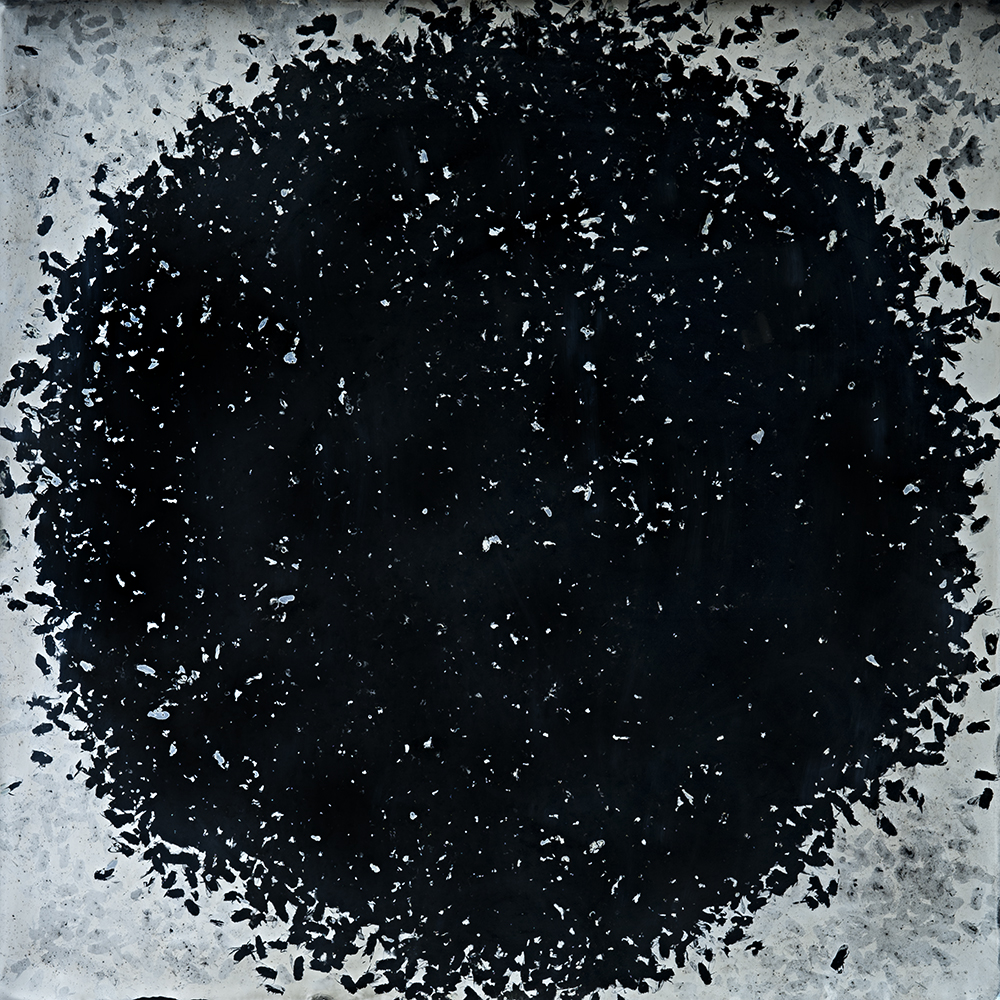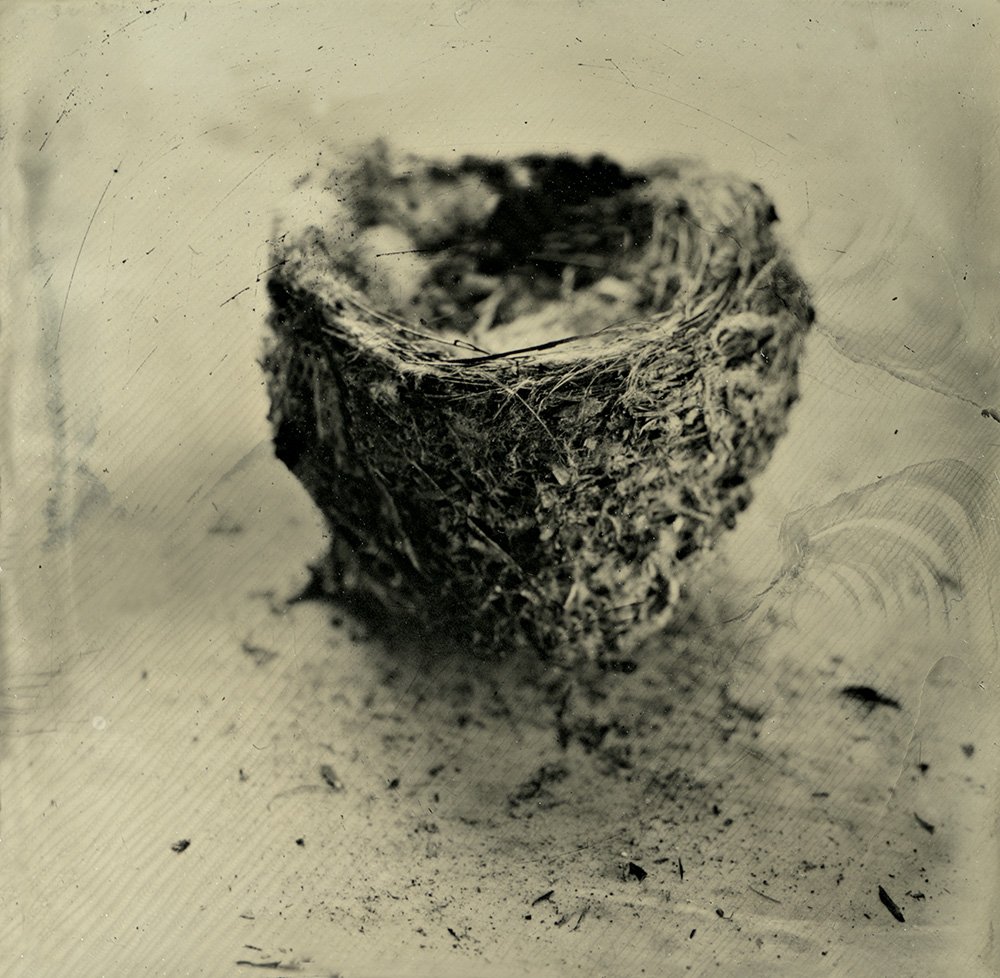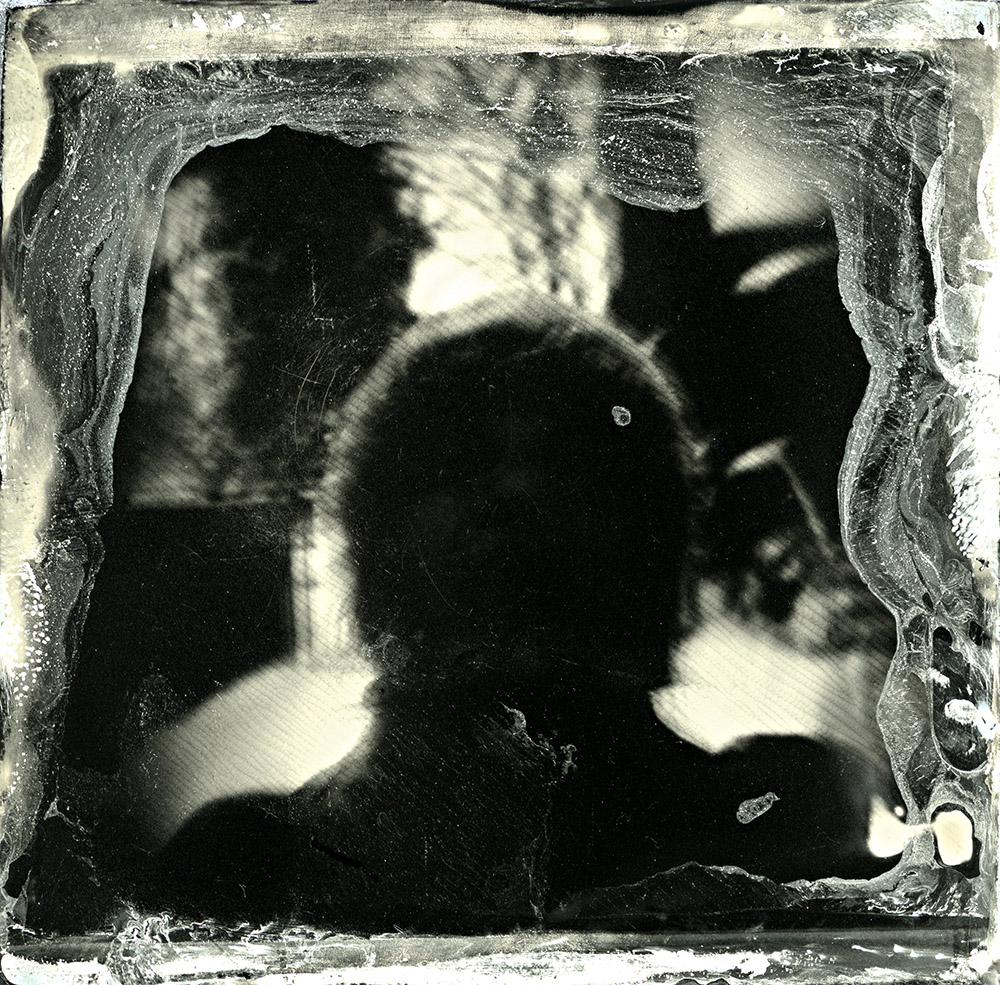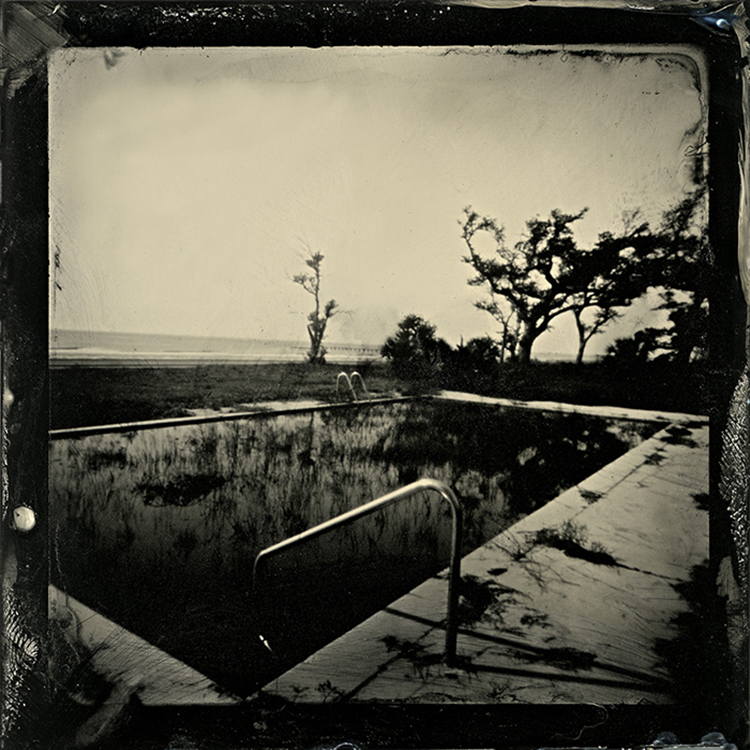|
Disappearance
 In Disappearance I have created two bodies of work; wet plate tintype photograms of individual bees (displayed as one hundred, two by two inch plates and an equal number of live flowering plants) and mammoth plate tintype photograms (twenty inch by twenty inch plates) with large quantities of dead honeybees. The photogram silhouettes are shadows of bees that once lived, and the large plates show the enormity of the issue, Colony Collapse Disorder. The purpose is to create greater awareness of the problem. Whenever possible, I work with local apiarists, having them speak on CCD and the importance of our pollinators. Ten percent of the sales are donated to these local apiarists.
CCD, which has been affecting hives since 2005, is devastating our pollinators. The causes are numerous including habitat loss, mites, and pesticides. 100% of the commercial almond crop in the U.S. is grown in California. The almonds are pollinated by mobile beehives, as are many crops. The loss of hives drives up the cost of pollination; this loss will have a decimating effect on our economy and our food supply. Other crops dependent on bees that could disappear are: apples, blueberries, cherries, avocados, cotton, oranges, grapefruit, cucumbers, etc… a nearly endless list. You can thank the Apis mellifera, better known as the Western honeybee, for 1 in every 3 mouthfuls you'll eat today... As our farms become monocultures of commodity crops like wheat and corn — plants that provide little pollen for foraging bees — honeybees are literally starving to death. If we don't do something, there may not be enough honeybees to meet the pollination demands for valuable crops. But more than that, in a world where up to 100,000 species go extinct each year, the vanishing honeybee could be the herald of a permanently diminished planet."Time Magazine The Plight of the Honeybee My intention is two-fold; by purchasing a tintype of an individual bee—which is priced inexpensively —anyone can actively participate in Disappearance, (by making the bees disappear during the course of the exhibition) bringing awareness to the problem, and also broadening the collector base for original art. With the larger plates depicting thousands of bees, the enormity of the problem is apparent. I hope we have not recreated the environmental concerns of Rachel Carson’s Silent Spring. We stand now where two roads diverge. But unlike the roads in Robert Frost'sfamiliar poem, they are not equally fair. The road we have long been traveling is deceptively easy, a smooth superhighway on which we progress with great speed, but at its end lies disaster. The other fork of the road — the one less traveled by — offers our last, our only chance to reach a destination that assures the preservation of the earth. Chemitypes
Nidification Nidification: is the act or process of making a nest. We relate in word and song to nest as home. We feather our nests; share a cozy little nest made for two, and then become empty nesters. I have always been drawn to the structure of nests, bird nests in particular. Built for protection of their young, bird nests are abandoned the following year. There is an interesting study by Albert Russel Wallace, A Theory of Bird’s Nests: Shewing the Relation of Certain Sexual Differences of Colour in Birds to their Mode of Nidification (1868). A nineteenth century naturalist, Wallace posits that a relation “exists between the structure, habits, and intelligence of birds, and the kind of nest they construct.” Differing in construction techniques and materials, they are built largely with organic material, though inorganic material is used as well; birds are natural recyclers. It is this structure that is fascinating; many of the nests are woven, some almost knitted into branches of trees. With the passage of time, the underlying architecture appears as a delicate and intricate drawing.
s. gayle stevens Calligraphy
calligraphy: beautiful writing or drawing
Calligraphy consists of a series of wet plate collodion tintype photogenic drawings of plant and animal specimens I have collected on walks near my home and in my travels. This series is inspired by "cabinets of curiosity", natural history collections from the 17thcentury, and the precursor of museums. The original meaning of "cabinet" was a small room; these rooms housed collections of plants, preserved animals and minerals. My collection contains diverse plant and animal remains. I have always been intrigued by what is overlooked in daily life and these objects are cherished for the unique beauty of their sparse remains. I have rendered my drawings of these specimens in wet plate collodion. The silhouettes of the photogenic drawings are rendered as black shadows and echo the brushstrokes in Chinese calligraphy, sparse yet expressive. Changeable as the original specimens, the silver rich plates are unvarnished and will tarnish with age. The speed and degree of tarnish will depend on their environment and the patina will be that of antique silver. The calligraphy series is composed of single and multiple five inch square plates displayed in the style of 19th century specimens and housed in black wood shadow box frames. This collection will be displayed as my personal museum of specimens collected on my daily walks. These images are my memento mori; an acknowledgement of lives passed, a rendering of fleeting shadows. Self How do we define self? Do the many parts that comprise the whole being define it? Or is it how others perceive us? I choose to look at the diverse parts that make up a person from childhood on. I look at the layers that make us who we imagine ourselves to be and how others perceive us. Then I turn the camera to show the image reflected in the mirror. pass pass: (n) opening, road, channel. In this series I recorded the ruins that once were the town of Pass Christian Mississippi, an artist community on the gulf devastated by Hurricane Katrina.
On the morning of August 29, 2005 Pass Christian, a community on the Mississippi gulf coast, lost all but 500 of its 8000 homes when Katrina’s storm surge topped the high water mark at over 30 feet and drove destruction more than half a mile inland. A once thriving artist community lay in ruins. Many residents have chosen not to return but their memories of Pass Christian remain the essence of this place. As time passes, blackberry vines creep over the remaining foundations; nature, like a shroud slowly covers Pass Christian. Over the past two years, I have returned repeatedly to photograph. To me, the loss of community is the most devastating aspect of this natural disaster. For this project I have chosen to create my images with a medium format pinhole camera using wet plate collodion, a process that dates from the time of the city’s founding. The plates are small size and intimate. Pinhole and wet plate, when used in tandem, create a surreal world of depth and mystery. Wet plate captures the mystery the way dreams reveal what daylight hides. S. Gayle Stevens Nocturnes Nocturnes: a collaboration with Judy Sherrod Our Nocturnes series began as an experiment, an adventure, a collaboration. A pinhole camera-maker and a wet-plate collodion artist collaborated to produce mammoth plate tintypes, echoing the work and process of the early survey photographers. Carleton Watkins, William Henry Jackson, and Timothy O’Sullivan, surveying the expansive landscape of the western US, found themselves at the mercy of nature. James McNeill Whistler, inspired by the visual melody he found in dark skies and seas, titled many of his paintings nocturnes. In turn, these paintings provided inspiration for the orchestral nocturnes written by Debussy, musical impressions which ebb and flow. Inspired by these artists and the waters of the gulf in Pass Christian Mississippi we too found ourselves at the mercy of the tides, our images determined by the capriciousness of the water before us.
Because of its infinite depth of field, the pinhole camera conveys the vast expanse of the sea while the collodion-silver emulsion flows across the plate like the waves across the sand.
The plates delivered an unexpected serendipity – a daytime nighttime, a sunny moonscape. There is ebb and flow between night and day, dark and light, as silent sentinels watch waves writing verse in the sand. This push and pull of tides, this melody of the waves, this lyric creates a visual dialogue that is the inspiration for Nocturnes, a little night music.
|
|





